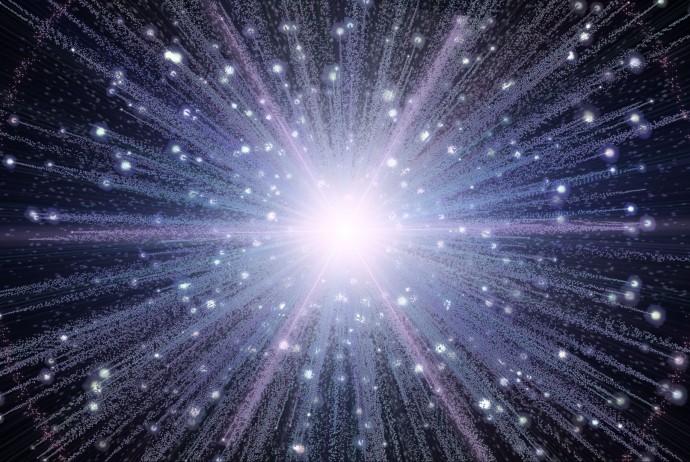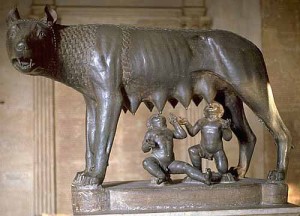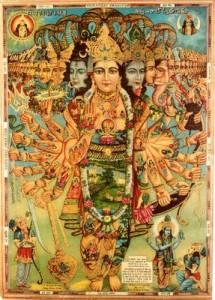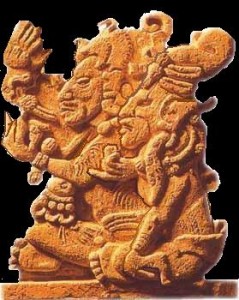Everyone has heard the myth of the founding of Rome: twins Remus and Romulus are found and raised by wolves. Romulus kills Remus (perhaps as a sacrifice). Rome is created. But where did this myth start? How did the story of twin brothers creating the society develop? To answer these questions, we need to look further back in history: to the Proto-Indo European (PIE) society. Now the question is this: how do we know what the PIE people believed? How do we reconstruct the creation myth?
We don’t have any written texts from the PIE people, so to figure out what they believed we have to look at the texts and beliefs of the daughter societies. By looking at these, we can connect the similarities and begin to form our reconstruction. We have written records of creation myths that are inter-related in at least three branches of PIE: Indic, Italic, and Germanic. The basic myth of a primordial being sacrificing something to create human life is seen in the Rig Veda (an ancient Hindu religious text), as well as the stories of Iran, Greece, Russia, Germania-Scandinavia, and Rome, among others. To reconstruct the creation myth, I will explain the myths of three of the daughter societies: the myth from Rome of Romulus and Remus, the Old Norse myth of Ymir, and the creation myth we find in the Rig Veda.
Rome: Remus and Romulus
Remus and Romulus were the twin sons of Mars (or in some versions, the demi-god Hercules). The twins’ mother Rhea Silvia, a Vestial Virgin, was raped by one of the two (Mars or Hercules), and gave birth to the twins. A Vestial Virgin betraying her vows was punishable by death, but King Amulius was afraid of incurring the wrath of Mars/Hercules, so he imprisoned her and ordered that the twins be killed. The twins were thrown into the Tiber River and eventually found by a she-wolf who cared for them as her own. After some time, a shepherd and his wife found Remus and Romulus and took them in. When they were older, they fought and Romulus killed Remus. Romulus founded Rome and named it after himself.
The Vikings: Ymir
At the beginning there was a great chasm bounded on either side by fire and ice, from the worlds of Muspelheim and Niflheim. When the fire and ice met, they formed a giant named Ymir and a cow named Auðhumla. The cow nurtured Ymir, who became the father of the ice giants. Odin, an Aesir, killed Ymir. The blood from Ymir’s body killed all of the frost giants except Bergelmir, and from Ymir’s body Odin created the world. This new world made from Ymir was Midgard, and from Ymir’s body an ash tree named Ygdrasil grew. This tree had three roots going to each of the three levels of the world: one to Asgard, home of the gods; one to Jotunheim, the land of the giants; and the last one to Niflheim, the land of the dead. Each root was nourished by its own spring. The spring for Asgard was guarded by the three fates: the past, present, and future. This Old Norse myth is the oldest of all remaining creation myths that we have texts from.
The Rig Veda: Puruṣa
The Rig Veda is a collection of sacred Hindu texts, and the creation myth is found in book 10. At the beginning of time, there was only one being, the Primal Man, or Puruṣa. Puruṣa had thousands of legs, arms, eyes, heads, and feet. Puruṣa split himself up into all beings, all of the gods and the whole universe were created from him. The remainder of the hymn describes all of the beings that were created from the parts of Puruṣa: “The Moon was gendered from his mind, and from his eye the sun had birth…” Each part of Puruṣa’s body was used to create the universe and all beings.
Proto-Indo-European
Now, to PIE. The PIE creation myth that we are able to reconstruct using all of the daughter societies (not just the ones discussed here) is this: a primordial being is sacrificed, killed, and often dismembered, and his body is used to create the cosmos. The name of the being is different in all of the societies that continue this tradition, but in Old Norse, we see the name Ymir. This name likely ultimately derives from the term *i̯emo- meaning “twin.” We can reconstruct *i̯emo- with the help of cognates such as Latin geminus ‘twin’ and Avestan yəma- ‘twin’. Further descendents of the Latin word are French jumeau, Spanish gemelo, and of course English words such as geminate. Because of this, we can see that it was very likely that the primordial being was a twin.
Other (Non-daughter) Societies
As you can see, twins are a common factor in many of the PIE daughter languages and cultures. Twins are also present in other societies around the world that are not related to PIE. There are stories of twins in many Native American cultures as well as in South American cultures, and similar creation myths in the Ancient Near East and Polynesia. The twins in the American myths are not always related to the creation myths of the societies, but the theme continues to appear in several cultures that are completely unrelated to PIE. One particularly strong example of twins in creation is the Mayan myth of the Hero Twins.
The Mayan society creation myth deals with the Grandparents or Hero Twins considered the founders of Mayan society, who were born from the white and yellow maize. The Hero Twins Hunahpu and Xbalanque were summoned by the lords of the underworld to play a ball game. The Hero Twins win the ball game and ascend to the sky to become the sun and the moon. The twins were then able to make the way for human life and the planting of corn.
The amount of societies with creation myths that seem similar to this PIE myth leads to further questions. Is it possible that the creation myth has been around even longer, that it possibly came from a society even before? One theory that has been presented is that a pre-PIE society developed the creation myth. Other theories have been proposed that consider the creation myth as a “common ‘primitive’ type,” (Lincoln 124) and that all of these unrelated societies developed their creation myths independently. While it is difficult to say where exactly the creation myth began, we can clearly see that the daughter languages have continued a related story of a primordial being (probably twins) creating the world as we know it, from at least as far back as PIE.
Written by Angela Mischke
For further reading:
- “Ancient Creation Myths.” Ancient / Classical History. N.p., n.d. Web. 24 Apr. 2014 <http://ancienthistory.about.com/od/creationmyths/tp/090808CreationMyths.htm>
- “Creation Story of the Maya.” Welcome to Living Maya Time. Smithsonian Institution, 2014. Web. 22 Apr. 2014. <http://maya.nmai.si.edu/the-maya/creation-story-maya>
- Fortson, Benjamin W., IV. “Indo-European Culture and Archaeology.” Indo-European Language and Culture: An Introduction. Malden: Blackwell, 2004. 43-44. Print.
- Garcia, Brittany. “Romulus and Remus.” Ancient History Encyclopedia. N.p., 04 Oct. 2013. Web. 24 Apr. 2014. <http://www.ancient.eu.com/Romulus_and_Remus/>
- The Rig Veda as translated by Ralph TH Griffith: Griffith, Ralph TH. “Rig Veda.” Sacred Texts. N.p., n.d. Web. 25 Apr. 2014. <http://www.sacred-texts.com/hin/rigveda/rv10129.htm>
- Lincoln, Bruce. “The Indo-European Myth of Creation.” History of Religions 15.2 (1975): 121-45. JSTOR. Web. 25 Apr. 2014. <http://www.jstor.org.ezproxy.uky.edu/stable/1061927?seq=3>




